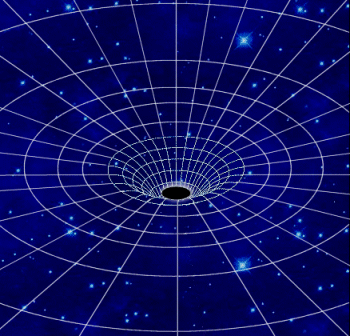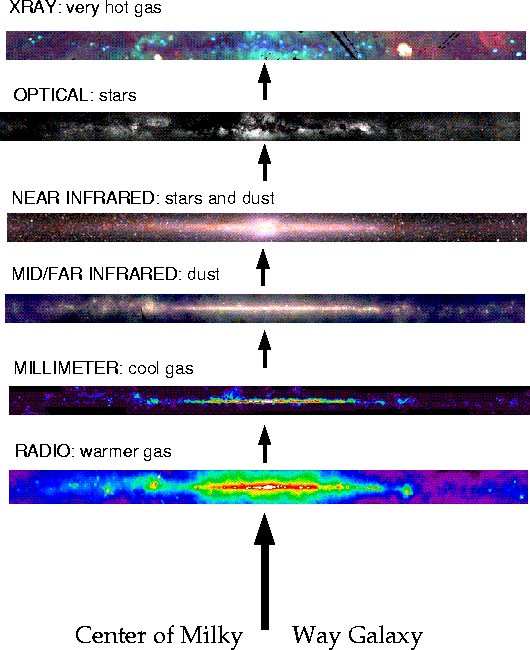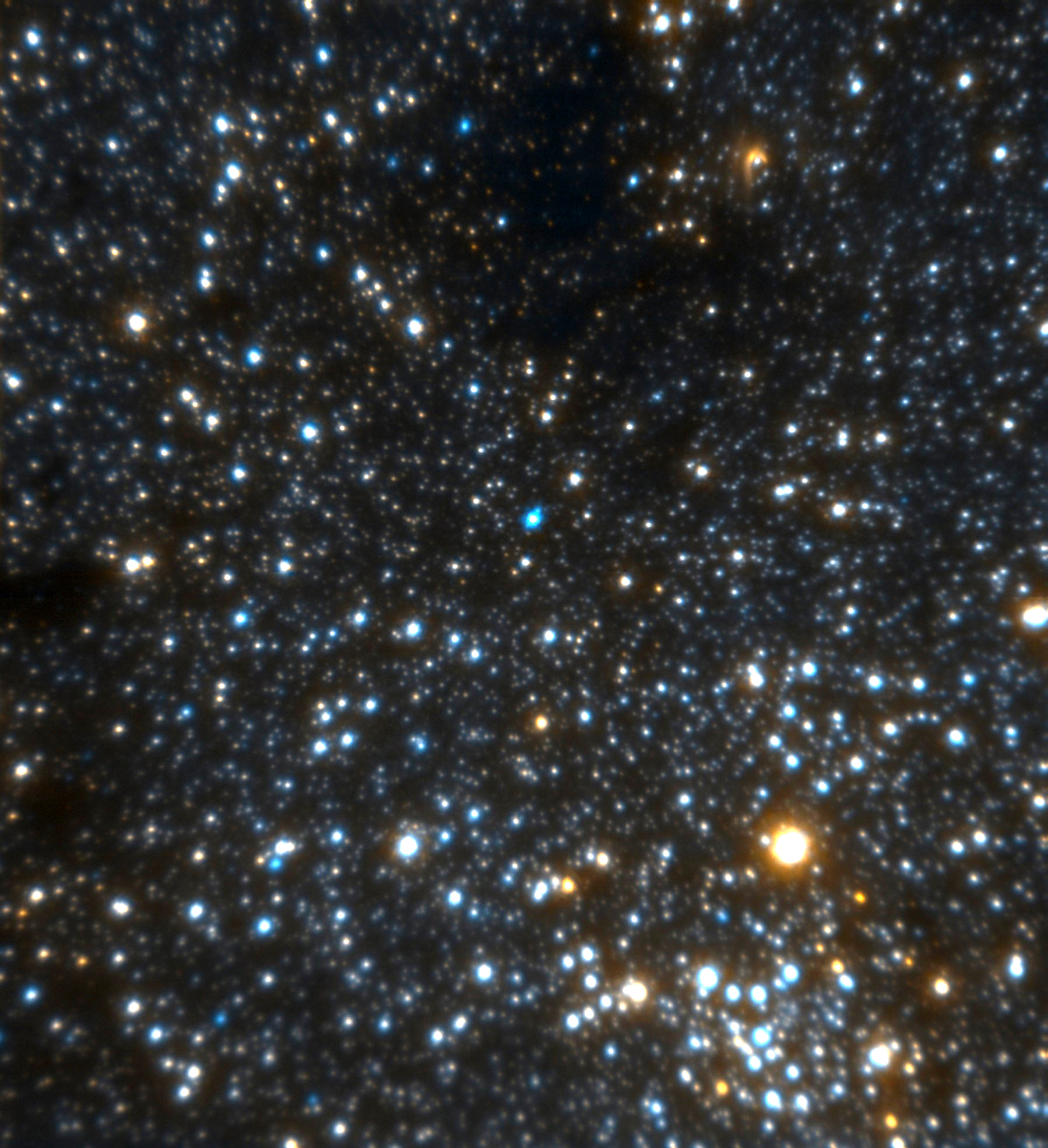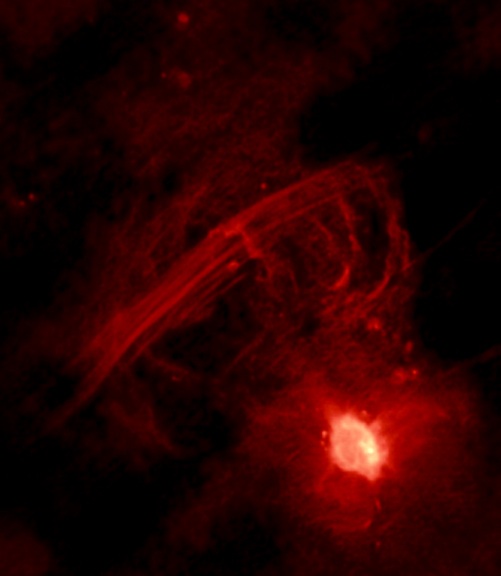
FAQs OF BLACK HOLES
LEARN ABOUT BLACK HOLES
Curious about black holes? Want to know more about black holes? Below is a list of questions we are often asked. Please click on a section below to see the answer!
WHAT IS A BLACK HOLE?
Imagine an object. A sponge or a car. Or a star, our own Sun. You can make this object smaller by squeezing it. When you do that, the surface gravity gets stronger. The smaller the objects becomes, the stronger its gravitational pull gets. What happens if you squeez the Sun so small that its radius is less than a couple of miles. Its surface gravity gets so large and powerful that nothing near this object can escape; not even light. This is a black hole.

Schematic of the Milky way.
Credit: Oglethorpe University
HOW BIG IS A BLACK HOLE?
Astronomers use the term event horizon or Schwarzschild radius, which is the radius of an imaginary sphere that defines the point of no return. If an object crosses the event horizon, it falls into the black hole and can never return to the outside. More technically, the event horizon radius is defined as the radius at which the escape velocity of the black hole equals the speed of light. Thus even light cannot escape the gravitational field of the black hole if it crosses the event horizon. What about the mass fell in to the black hole? It supposedly reaches a point of infinitesimal size and infinite density, the singularity where our non-quantum theory of gravity fails.
The size of an event horizon depends on the black hole mass. The more massive the black hole is, the larger the radius is. The event horizon is 3km (a little less than two miles) for our Sun, or any one-solar-mass object. For more massive black holes, the size of the event horizon scales linearly; ten-solar-mass black hole would have a 30-km event horizon. Or in another words, if you start out with ten solar masses, that needs to collapse into a 30-km region in order to produce a black hole and event horizon.

CAN ANY STAR BECOME A BLACK HOLE?
For most of its lifetime, a star stays intact. The gravity pulls everything inside the star inward but it does not collapse because this inward force is balanced by an outward force provided by the gas pressure from the high density and temperature in the center of the star. However, eventually the central region of the star runs out of fuel (whatever atoms that were fusing together to provide outward energy).
What happens then? How stars evolve depends on their mass. For a not-so-massive star like our own Sun, they shed its outer layers into insterstellar space as planetary nebulae. Only the innermost core remains which becomes a white dwarf which is a very dense object whose size is about that of a planet. White dwarfs do not collapse because the electrons inside are smashed together so tightly and provide outward pressure. A more massive star ends its life with a spectacular supernova, leaving behind either a neutron star or a black hole. If the core is less than three solar masses, then we have a neutron star in which neutrons now provide the outward pressure against gravitational inward pull. If the remnant of the star after supernova reaches more than three solar masses, then not even neutrons can resist the gravity and it collapses into a black hole.

Hydrostatic equilibrium in the Sun. At each point inside, the pressure pushing outward balances the weight of the overlying layers.
Credit:The Essential Cosmic Perspective by Bennett, Donahue, Schneider and Voit

Stellar evolutionary paths for stars of different masses. Only the most massive stars can become black holes.
WHAT HAPPENS IF YOU FALL INTO A BLACK HOLE?

25" X 25" H & K image of the Central Parsec Cluster. Credit: Gemini.
You probably do not want to go very near a black hole, but if you are so curious that you need to make a trip down there, here is what will happen. After all, black holes are without question some of the strangest places in the universe.
What happens to your body as you fall into a black hole isn't pretty. A tidal force is a difference in the gravitational force between two points. The most familiar example is the tides we observe each day, especially at ocean fronts. The gravitational field of the moon causes the Earth to deform, as the strength of the gravity is stronger on the s near ide of the Earth that is facing the moon than the far side. The liquid ocean gets stretched even more and we observe larger tides.
This same tidal force applies to your body when you are falling into a black hole. The difference in acceleration between the head and feet could be many thousands of Earth gravities, and you will literally be ripped apart. Physicists call this phenomenon "spaghettification"!
DO BLACK HOLES EXIST?
Yes they do! We cannot see them directly but astronomers can detect them by studying how the nearby dust, gas and stars are affected. The closest example is at the center of our own Milky Way Galaxy, located 27,000 light years away from the Earth. There is a four-million solar-mass black hole. They detected this object by directly observing stars orbiting around it. Just like planets go around the Sun, stars close to the black hole move around it, and by measuring their motions, they can figure out how massive the central black hole is.
There have been many examples of black holes in other galaxies further away as well. Many of them have discs of material swirling around the central black holes. In the central region of M87, a galaxy which is located about 54 million light years away from us, the mass of an unseen obsject was estimated to be about 3 billion times the mass of our Sun by observing the motion of the material whirling about it.
Hope you have enjoyed this Black Hole FAQ tutorial and now have some understanding
of what a Black Hole is!
Thank You - The Galactic Center Group.

The center of our Galaxy, as seen in the radio. Credit: Farhad Zadeh, VLA, NRAO, APOD
HOW DOES LIGHT GET BENT BY A BLACK HOLE?

Credit: ESA, NASA, Richard Ellis (Caltech) and Jean-Paul Kneib (Observatoire Midi-Pyrenees, France)
Any light that comes nearer than the event horizon gets caught and is not able to escape from the black hole's gravitational pull. The light that comes near but outside the event horizon does not get caught but its path is bent by the black hole's gravity. The starlight therefore appears distorted. This phenomenon has not been directly observed around any black holes yet, but we have seen examples around other massive astronomical objects. The picture taken by Hubble Space Telescope shows how a massive cluster of galaxies, Abell 218, can bend the light of from more distant galaxies behind it. It acts like a giant lens and creates thin arcs of light.
WHAT WOULD HAPPEN TO EARTH IF THE SUN BECAME A BLACK HOLE?
Fortunately, our Sun will never become a black hole. It is not massive enough to ever evolve into a black hole. The Sun will end its life as a white dwarf, in about 4.5 billion years from now. However, let's assume that the Sun is now replaced with a black hole of the mass equal to that of the Sun. The event horizon for one solar mass black hole is only 3km, so this hypothetical black hole would not affect the Earth and its orbit at all.
There are many other resources on black hole science. Here is a list to get you started.